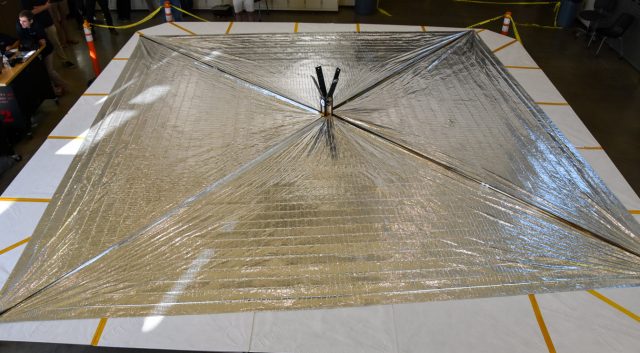
NASA Moves Forward With Next-Gen Solar Sail Project
Getting from point A to point B in the solar system is no simple feat, and inefficient, heavy rockets aren’t always the best way. Therefore, NASA has announced it is moving ahead with a new solar sail concept that could make future spacecraft more efficient and maneuverable. The Diffractive Solar Sailing project is under the NASA Innovative Advanced Concepts (NIAC) program, which could eventually lead to probes that use solar radiation to coast over the sun’s polar regions.
The concept of solar sails is an old one — they were first proposed in the 1980s. The gist is that you equip a vessel with a lightweight sail that translates the pressure from solar radiation into propulsion.
This work is being undertaken at the Johns Hopkins University Applied Physics Laboratory under the leadership of Amber Dubill and co-investigator Grover Swartzlander. The project progressed through phase I and II trials, which had the team developing concept and feasibility studies on diffractive light sails. The phase III award ensures $2 million in funding over the next two years to design and test the materials that could make diffractive light propulsion a reality.

A standard lightsail developed by the Planetary Society in 2019.
A diffractive light sail, as the name implies, takes advantage of a property of light known as diffraction. When light passes through a small opening, it spreads out on the other side. This could be used to make a light sail more maneuverable so it doesn’t need to go wherever the solar winds blow.
The team will design its prototypes with several possible mission applications in mind. This technology most likely won’t have an impact on missions to the outer solar system where sunlight is weaker and the monumental distances require faster modes of transportation. However, heliophysics is a great use case for diffractive lightsailing as it would allow visiting the polar regions of the sun, which are difficult to access with current technology.
A lightsail with the ability to essentially redirect thrust from a continuous stream of sunlight would be able to enter orbit over the poles. It may even be possible to maneuver a constellation of satellites into this difficult orbit to study the sun from a new angle. In a few years, NASA may be able to conduct a demonstration mission. Until then, it’s all theoretical.
Now Read: